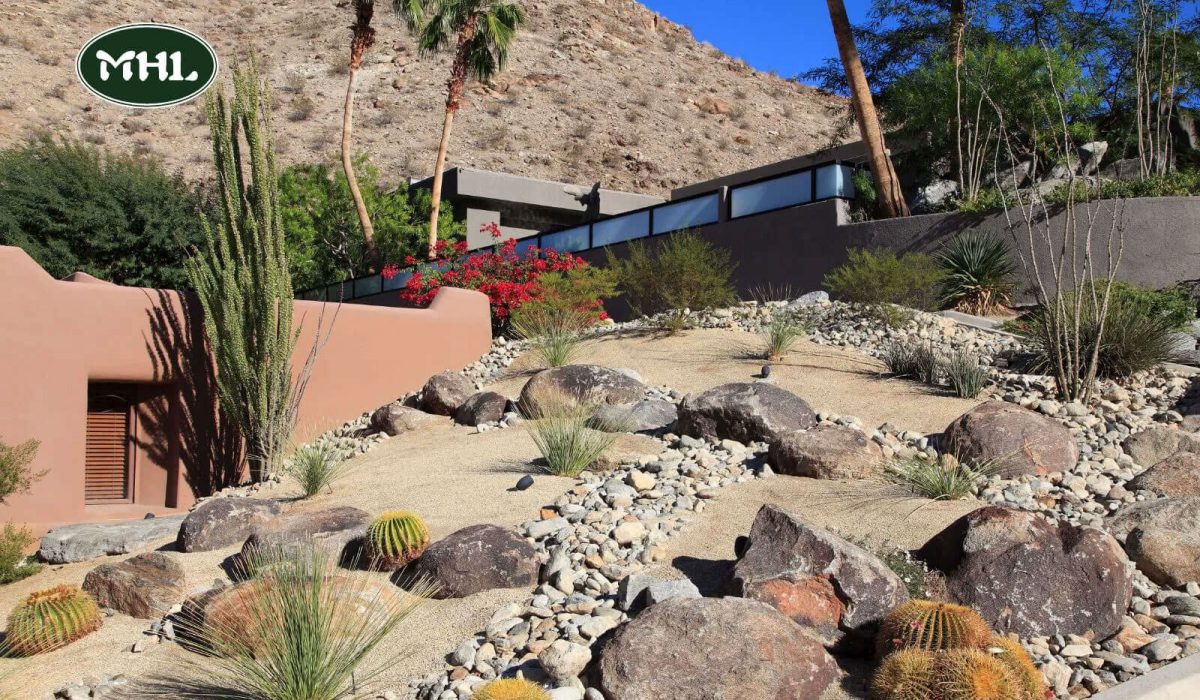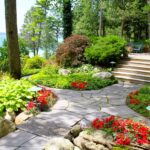What is Xeriscape Landscaping? 5 Benefits and 4 Drawbacks of Xeriscaping
If you live in a drought-prone area or want to reduce your landscape’s water usage, consider xeriscape landscaping. This method focuses on conserving water by using plants that require little to no extra irrigation. By adopting xeriscaping in your garden, you’ll not only conserve water but also reduce your workload since the plants are chosen to thrive in your area’s natural climate.
Xeriscaping landscaping has become increasingly popular in many states because it thrives with minimal water. The desert-oriented plants used in xeriscaping are highly resilient, making them ideal for arid conditions. With its water-saving benefits and the durability of these plants, xeriscaping could be the next big trend in gardening.
What is xeriscape landscaping?
Xeriscape landscaping, or “xeriscaping”, is a gardening method tailored for regions where droughts are common or water conservation is crucial. Essentially, xeriscaping focuses on creating landscapes that need very little water to flourish. Originally developed for hot, arid environments, this approach has expanded to benefit a variety of climates where water preservation is key.
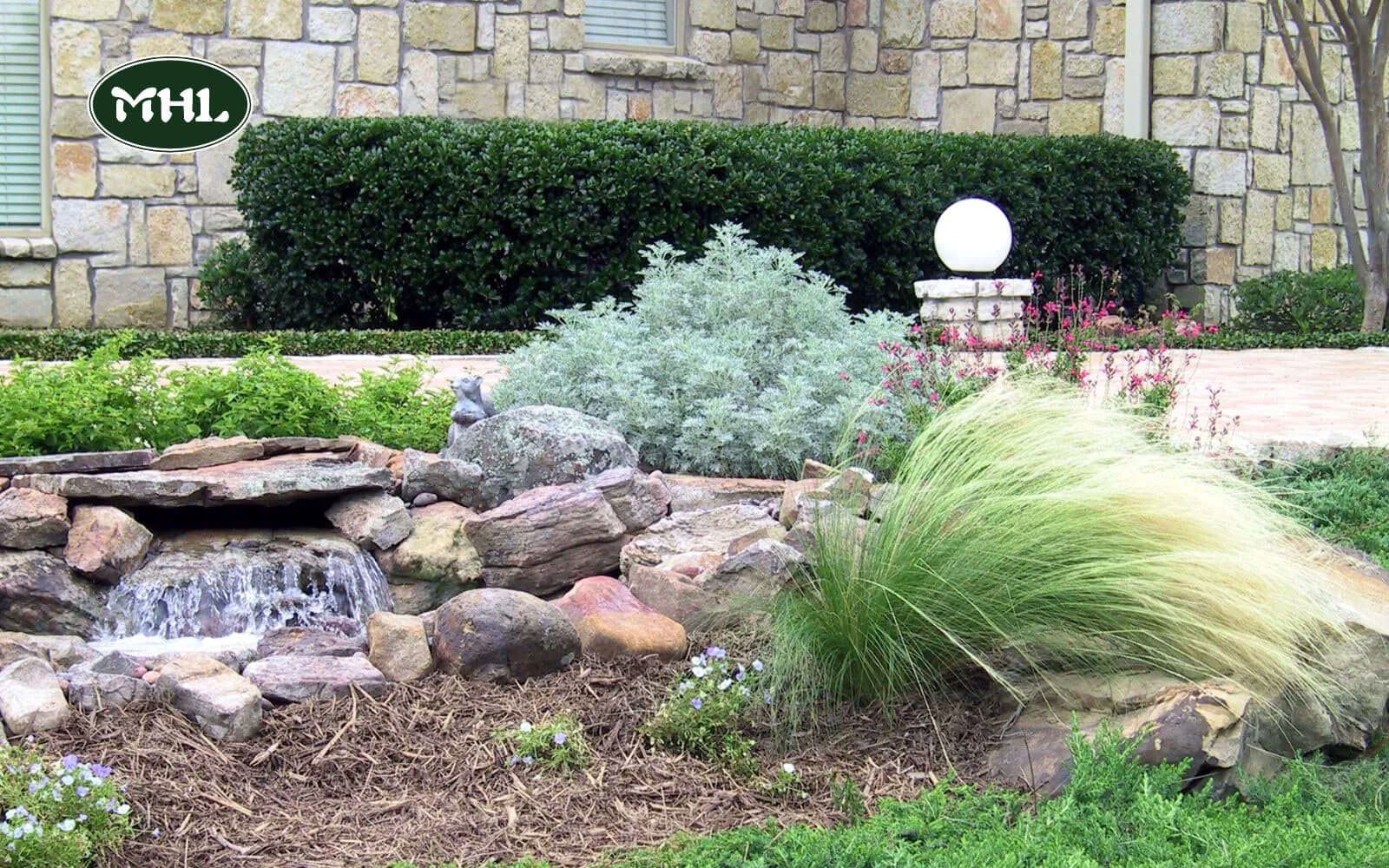
While xeriscaping is an alternative to traditional gardening, it shares similar principles, including soil improvement, runoff prevention, and promoting biodiversity. The aim is to design green spaces that require minimal maintenance and water use.
Which xeriscape landscaping plants are commonly used?
Xeriscape landscaping plants are low-maintenance and thrive with little to no extra watering. But xeriscaping doesn’t mean your garden has to be barren or dry. With the right plants, a xeriscape garden can be lush, vibrant, and full of color.

The suitability of these plants can vary based on your area’s annual rainfall and seasonal temperatures. A plant that thrives in one region might become too aggressive or invasive in another. It’s always a good idea to check local guidelines before introducing any new plants to your garden.
Here are some xeriscape landscaping plants that are widely used:
- Blazing star: There are over 40 species of blazing star, native to regions from Ontario to Texas. These plants are quite drought-tolerant and typically grow between 2 to 4 feet tall, though some can reach up to 6 feet. They thrive in full sun but can also tolerate light shade.
- Alliums: Alliums, also known as flowering onions, come in a variety of sizes and colors, with pink and purple being the most common. They thrive in full sun and well-drained soil.
- Yarrow: Yarrow (Achillea spp.) is a favored perennial for drought-tolerant and xeriscape gardens. It thrives in full sun, and trimming it back to the ground after blooming can promote a second round of flowers.
- Agave: Agaves bring structural elegance to xeriscape gardens, with sizes ranging from under a foot to several feet tall and wide. While they can be grown in pots, larger agaves can become quite heavy and difficult to move.
- Little bluestem: Little bluestem is a small ornamental grass, growing 2-3 feet tall and 1-2 feet wide, and is native to the United States. It forms compact, upright clumps and requires minimal water once established in your garden. It remains upright and maintains its appeal throughout the winter, particularly in areas with light snowfall. In late spring, you can trim it back to the ground to make room for new growth.
- Lavender: Lavender is a popular choice among xeriscape landscaping plants. Known for its aromatic qualities, lavender is also a heat-loving, drought-tolerant star in ornamental gardens, where its beautiful flowers truly stand out.
The benefits of xeriscape landscaping
Creating a xeriscape landscape offers many advantages, such as conserving water, requiring minimal maintenance, supporting a variety of native plants, lowering costs, and reducing weed growth.
5 benefits of xeriscape landscaping:
- Maintenance
- Biodiversity and natural beauty
- Water conservation
- Lower overall costs
- Save time
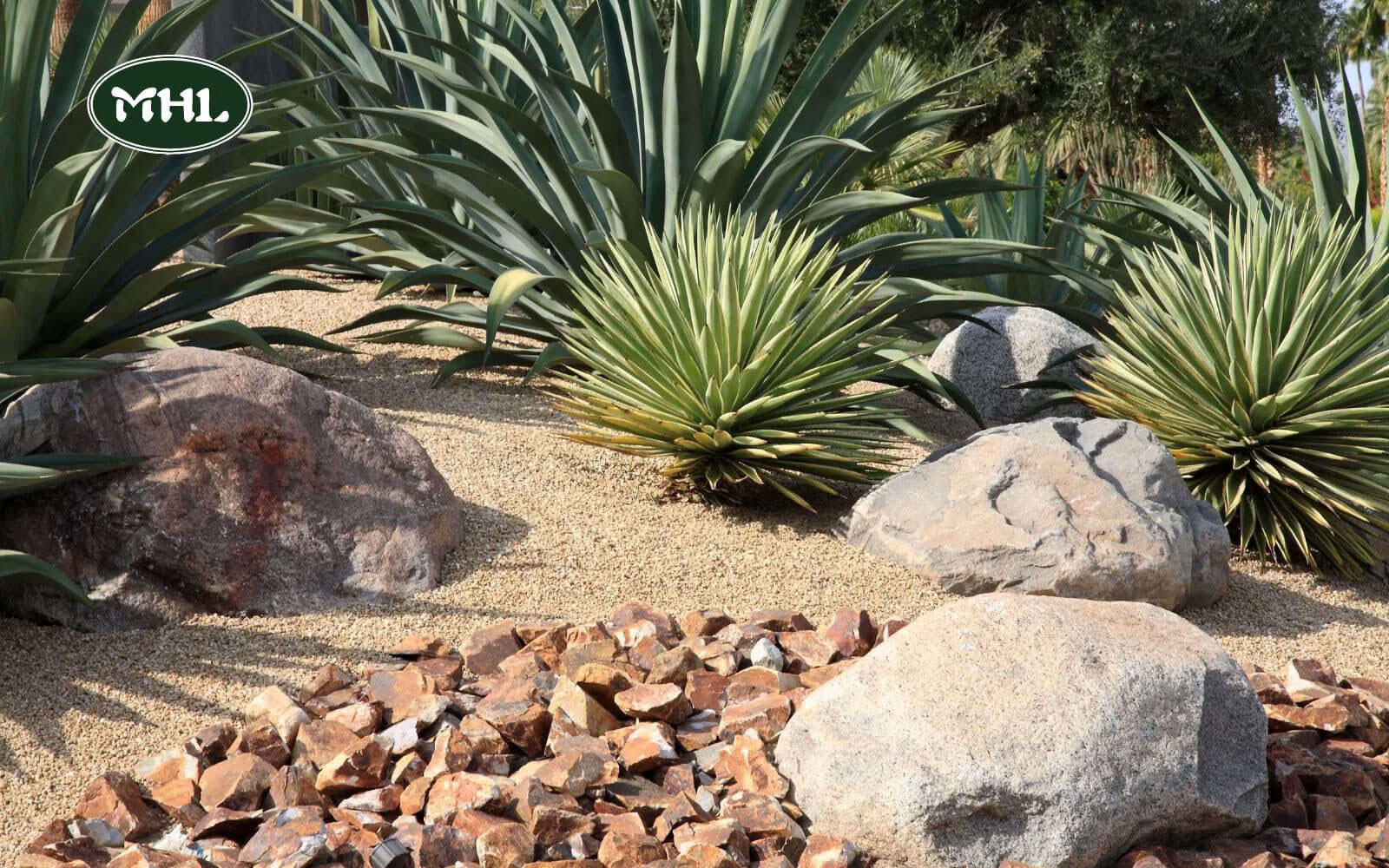
Maintenance
One of the key benefits of xeriscape landscaping is its low maintenance. Drought-tolerant plants tend to grow slowly, reducing the need for pruning, trimming, and weed control. Desert plants and shrubs typically don’t require fertilizer and are highly resistant to pests and disease. After the first year, the minimal upkeep required is one of the top advantages of xeriscape landscaping.
Biodiversity and natural beauty
As many native animals and insects lose their natural habitats, your xeriscape landscaping can provide the essential home and food sources they need. Planting native species in your xeriscape garden will attract beautiful pollinators like butterflies, bees, and birds, adding vibrant color and life to your backyard.
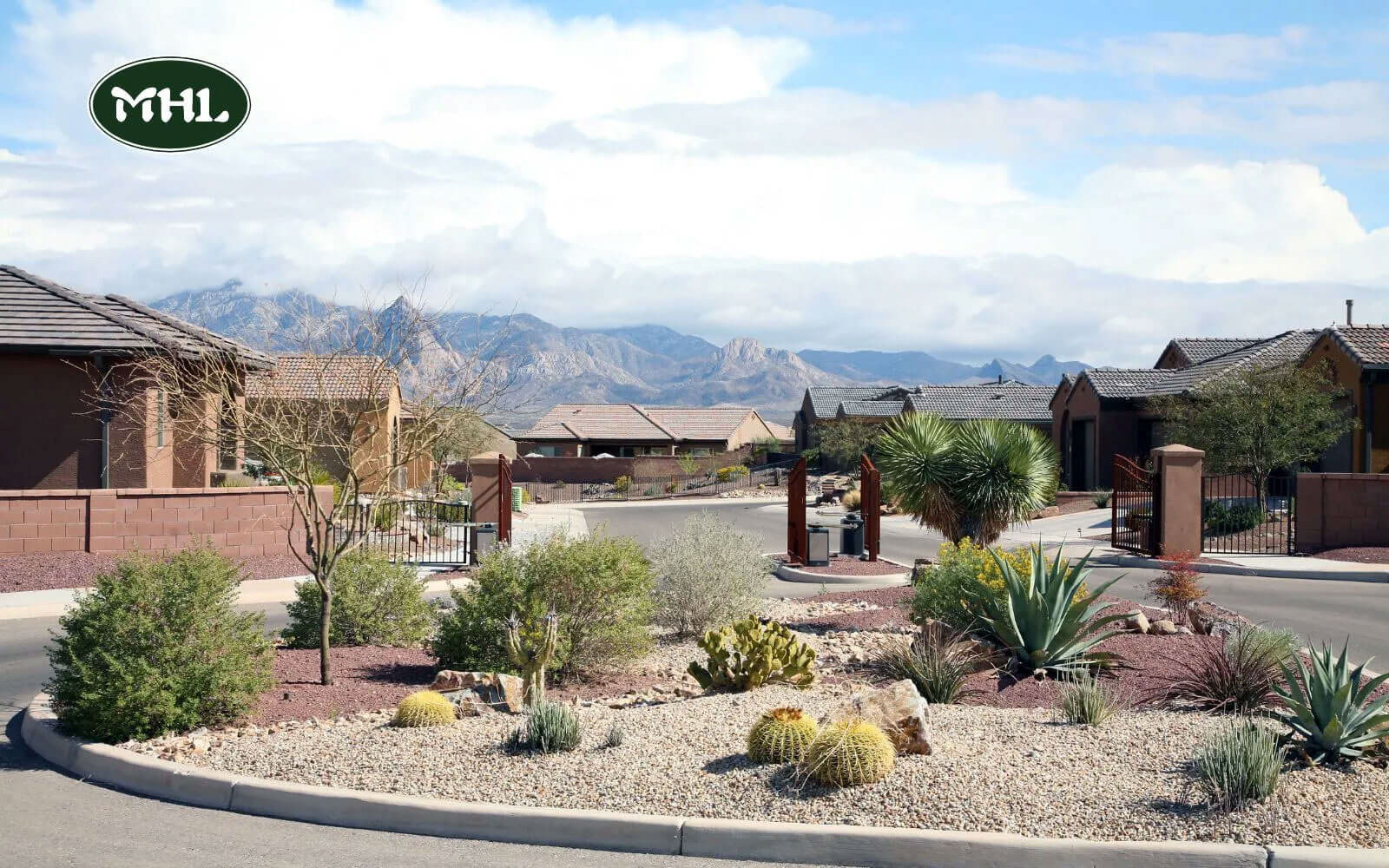
Here are some of the top wildflowers for attracting butterflies and bees:
- Black-eyed Susan
- Common madia (tarweed)
- Arroyo lupine
- Purple coneflower
- Aster
- Yarrow
- Sage
- Verbena
Beside promoting biodiversity, with thoughtful planning and the use of attractive native plants, your xeriscape landscape can become a beautiful sight.
While cacti are a popular choice, you can also include lush succulents, elegant ornamental grasses, and vibrant flowering plants. A xeriscape garden can feature deciduous trees or shrubs, as well as evergreens that offer year-round color.
Water conservation
Xeriscaping plays a crucial role in water conservation. Native plants, which are specifically adapted to your region’s climate and soil, require far less water than traditional turfgrass, with many needing no additional water at all. Additionally, hydrozoning—grouping plants based on their water needs—helps prevent both overwatering and underwatering.
In the next 50 years, some regions in the U.S. may face a reduction in freshwater supplies by up to one third. Xeriscaping reduces the water needed for lawns, helping to conserve more water for essential uses like drinking and lowering the risk of water shortages.
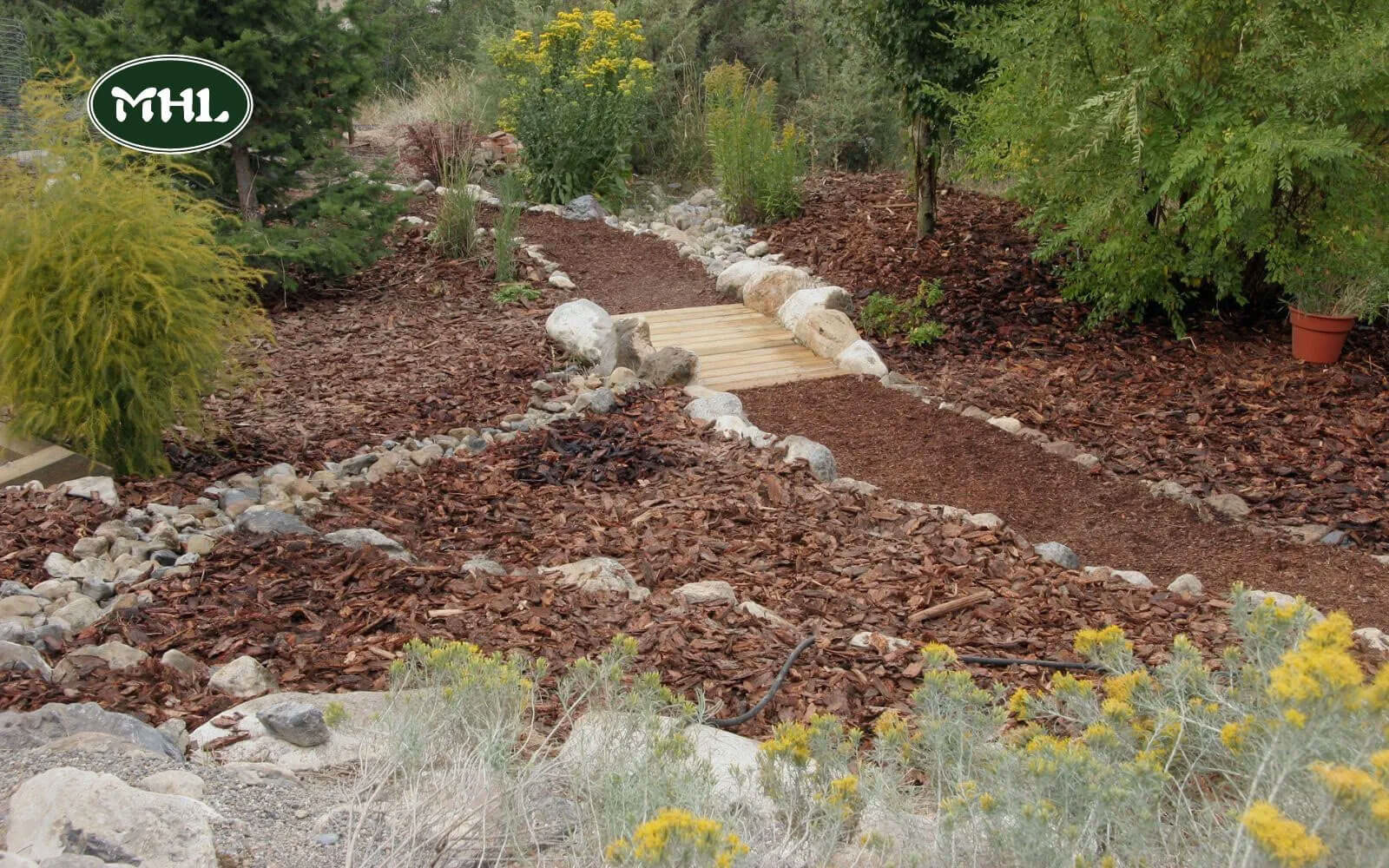
Lower overall costs
Xeriscaping can reduce your water bill by as much as 80%. By choosing native plants, you’ll also save money on gas for your lawn mower and eliminate the need for fertilizer. Overall, xeriscaping can reduce your annual lawn maintenance costs by an impressive 87 percent.
A well-planned xeriscape design confines grass to a specific area, so you only need to water, fertilize, and mow where it’s essential. The rest of your yard can flourish with little to no extra costs.
Save time
Drought-tolerant ground covers, perennial flowers, succulents, shrubs, and trees typically need watering only once every two to three weeks, and some hardy native plants may not require any watering once they’re established.
While xeriscapes aren’t completely maintenance-free, you can set aside your mower and weeding gloves. Most ground covers, like sedum and sage, only need occasional trimming, and mulch and rocks help keep weeds at bay.
That’s why xeriscaping (means less watering, mowing, and weeding) allows you to enjoy your weekends doing what you love.
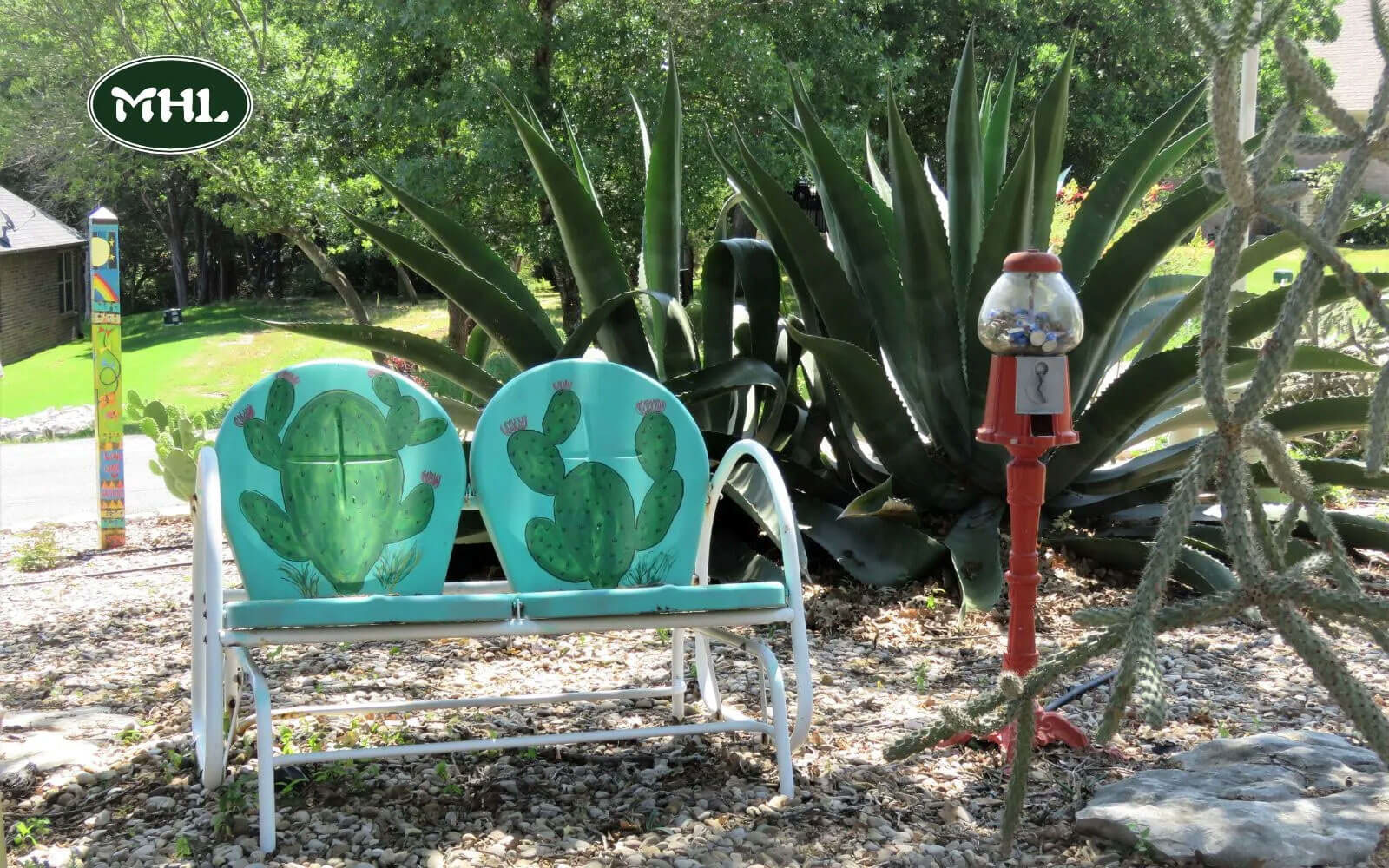
Related:
Landscape Maintenance Services Explained: What’s Included and Why It Matters
17 Low-Maintenance Front Yard Landscaping Ideas to Transform Your Home’s Curb Appeal
The drawbacks of xeriscape landscaping
While xeriscaping, like any landscaping approach, has its drawbacks, many people find it worthwhile to invest the effort in order to enjoy a garden with reduced maintenance.
4 drawbacks of xeriscape landscaping:
- More time and money for the initial set-up
- Little to no turf
- Plant selection is crucial
- Improper design issues
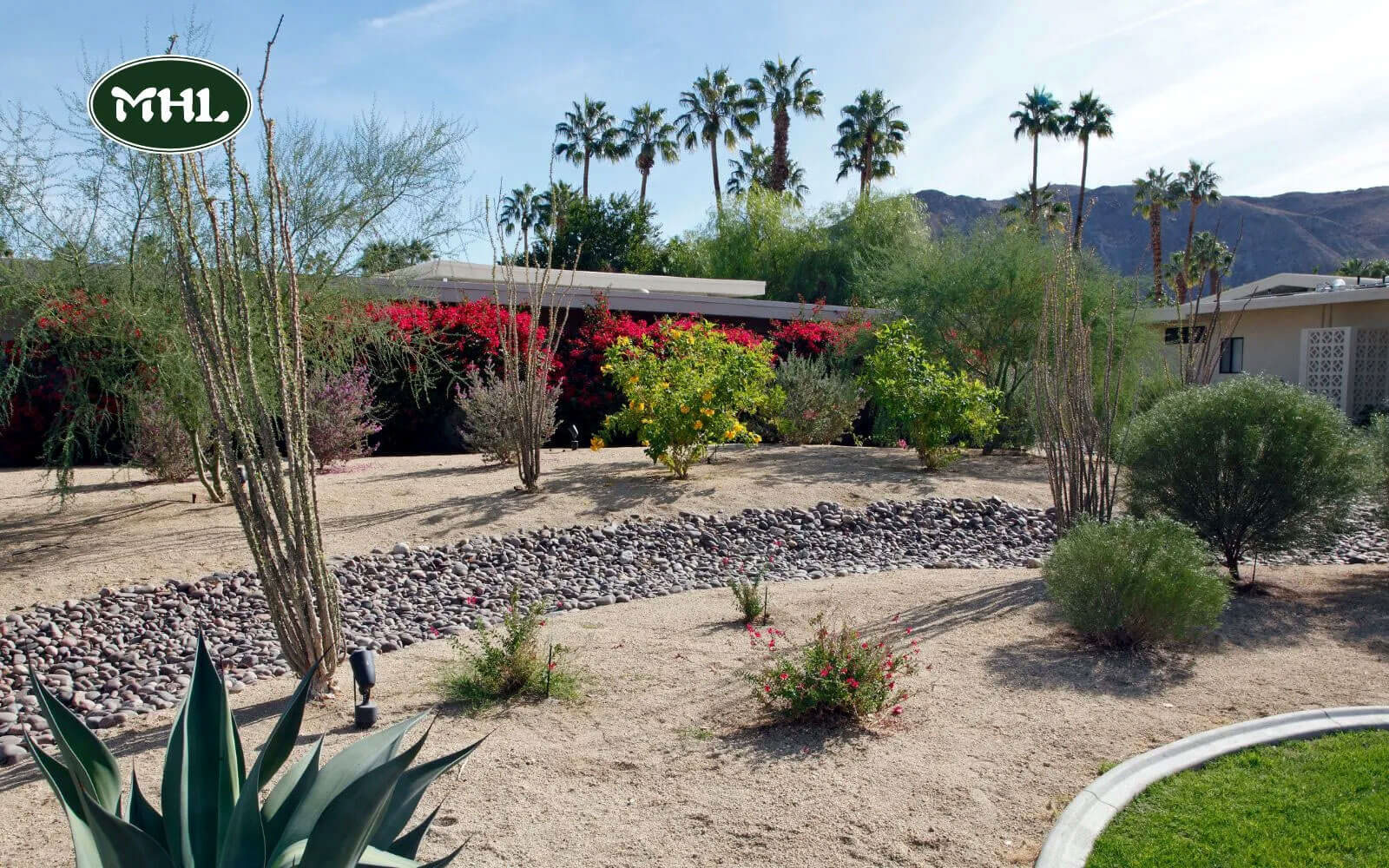
More time and money for the initial set-up
There’s no way around it—setting up a xeriscaped landscape requires significant effort. The amount of work varies depending on your starting point, but it’s a big job regardless.
If you’re converting a lawn, you’ll likely need to lay down landscape fabric to prevent grass from returning. Depending on your yard’s size, that could mean using a substantial amount of fabric, which adds to the material costs since landscape fabric isn’t cheap.
While the workload will decrease over time, you’ll need to invest some serious time and effort upfront to get there.
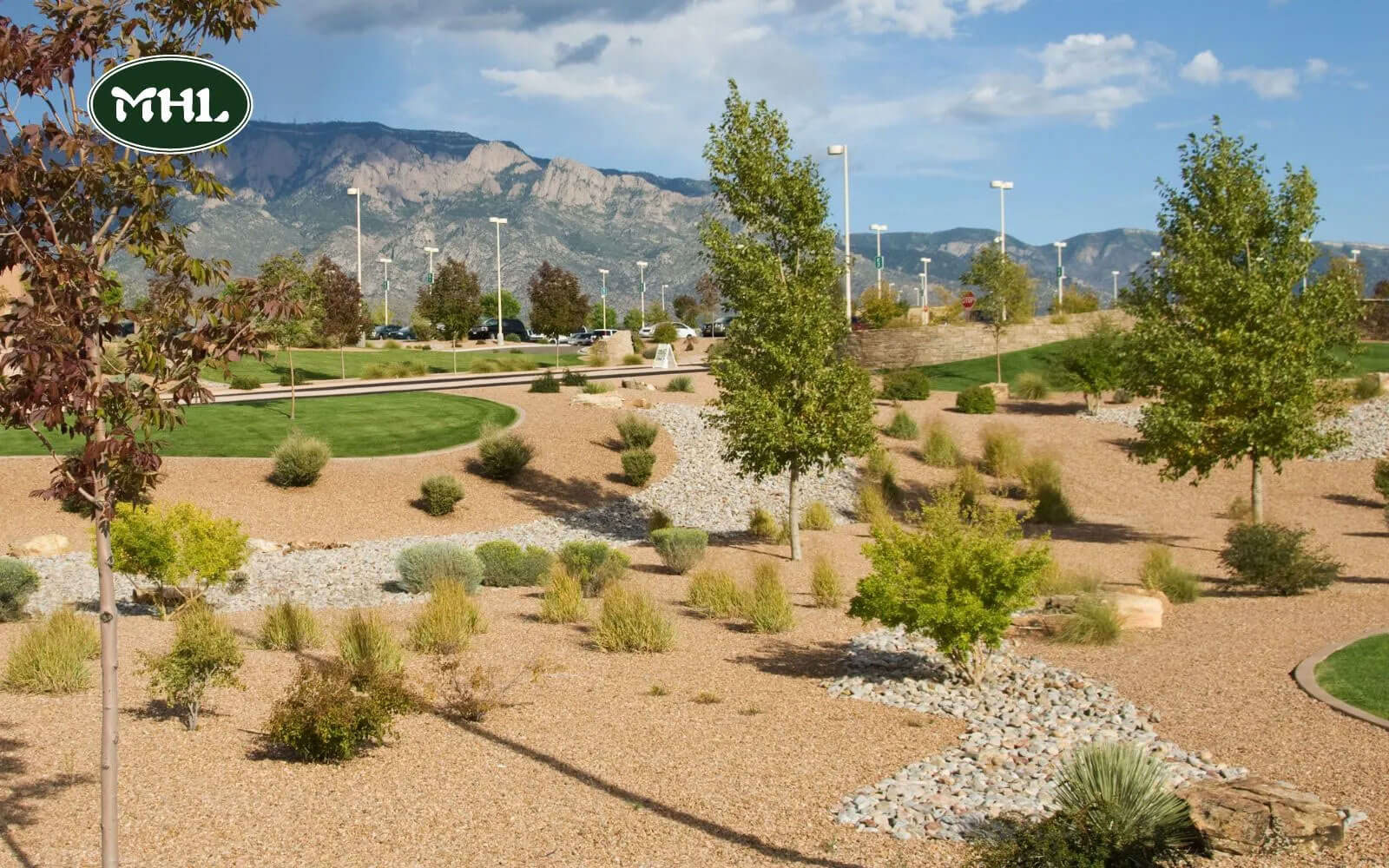
Little to no turf
Lawns are popular for good reasons—they provide a perfect spot for picnics, sunbathing, and playtime for kids and dogs. They’re also ideal for budding athletes to practice their skills. If a large lawn is essential to your lifestyle, then xeriscaping might not be the best fit for you.
Plant selection is crucial
When xeriscaping, it’s essential to select plants thoughtfully rather than picking them at random. The success of your outdoor space depends on considering both the design and the available water supply. You can still choose visually striking plants, but not every plant has to be water-intensive.
By making practical plant choices that align with your design goals, you can create a beautiful xeriscape landscape that requires minimal maintenance. Certain trees, like palm trees, are especially valuable in xeriscaping because they thrive in arid conditions with low water needs, enhancing your garden’s aesthetic while conserving water.
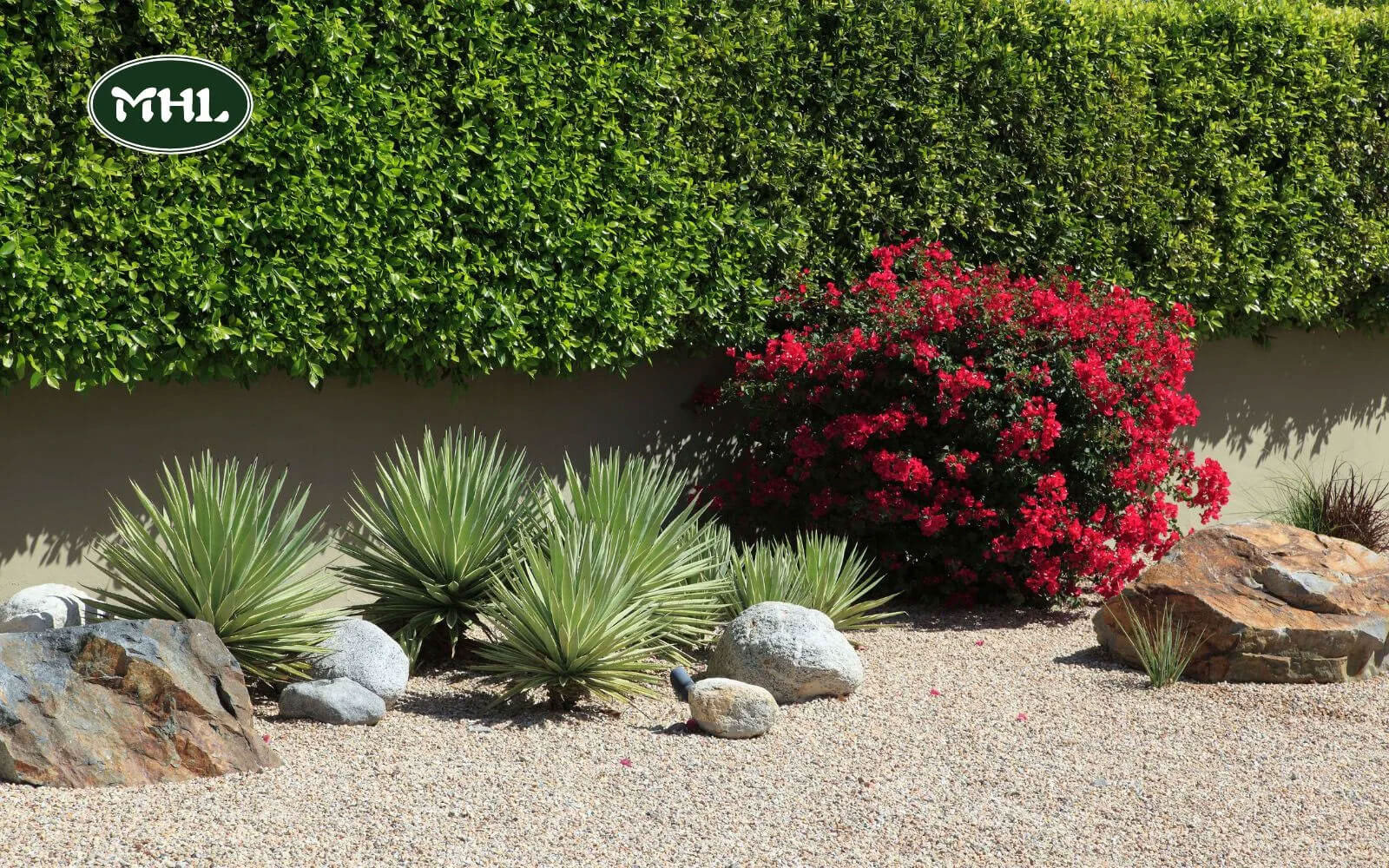
Improper design issues
If you don’t carefully plan your xeriscape from the start, you may face design problems for years to come.
When designing your xeriscape, it’s essential to consider the natural water flow in your space to maximize water efficiency. If this feels overwhelming, consulting a professional can help align your design with available water resources.
Your garden’s layout will influence the number and type of plants, as well as the overall cost. Sticking to your planned layout allows for better scheduling of tasks like watering, pruning, aeration, and fertilization, ensuring proper garden maintenance.

How much does xeriscape landscaping cost in Denver?
Xeriscaping in Denver, Colorado, is a substantial outdoor project that can cost anywhere from $15,000 to $30,000. The final price largely depends on the size of the area, the types of plants, and the materials such as rocks, gravel, and pebbles you choose. Additionally, labor and design fees will also impact the overall cost.
In conclusion, xeriscape landscaping is an excellent solution for individuals seeking a beautiful garden that requires minimal maintenance and water usage. In water-scarce areas, this method allows you to arrange your plants to thrive with minimal water while avoiding unnecessary resource wastage.
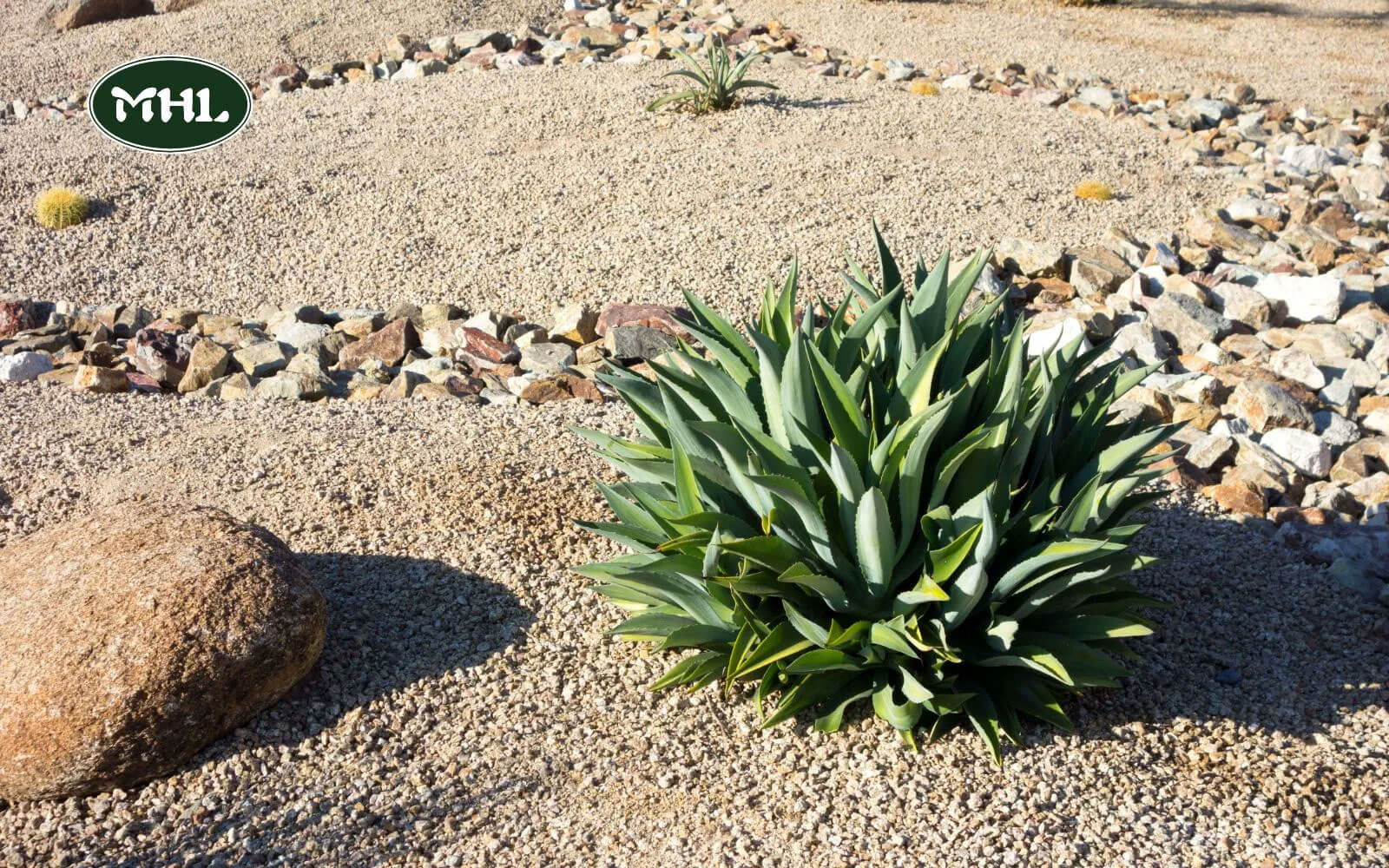
If you’re interested in xeriscape landscaping services, consider Mile High Lifescape. With an experienced team of experts, we can assist you in designing and creating a stunning xeriscape garden tailored to your needs and conditions.
Contact Mile High Lifescape at (720) 301-3335 today to explore more about our high-quality xeriscape landscaping services.
Contact us:
Address: 1427 S Federal Blvd, Denver, CO 80219
Hotline: +1 (720) 301-3335
Email: [email protected]
Reference
1. Guide to Xeriscape Landscaping. Available at: https://www.thespruce.com/xeriscape-landscaping-meaning-2131129
2. 21 Xeriscape Plants for the Water-Wise Garden. Available at: https://www.bhg.com/xeriscape-plants-8423782
3. Benefits of Xeriscaping. Available at: https://lawnlove.com/blog/benefits-of-xeriscaping/
4. Xeriscape Gardens: Pros And Cons Of Xeriscaping. Available at: https://www.gardeningknowhow.com/gardening-pros-cons/pros-and-cons-of-xeriscaping
5. Xeriscape Landscaping: Pros and Cons. Available at: https://www.backyardboss.net/xeriscape-landscaping-pros-and-cons/
